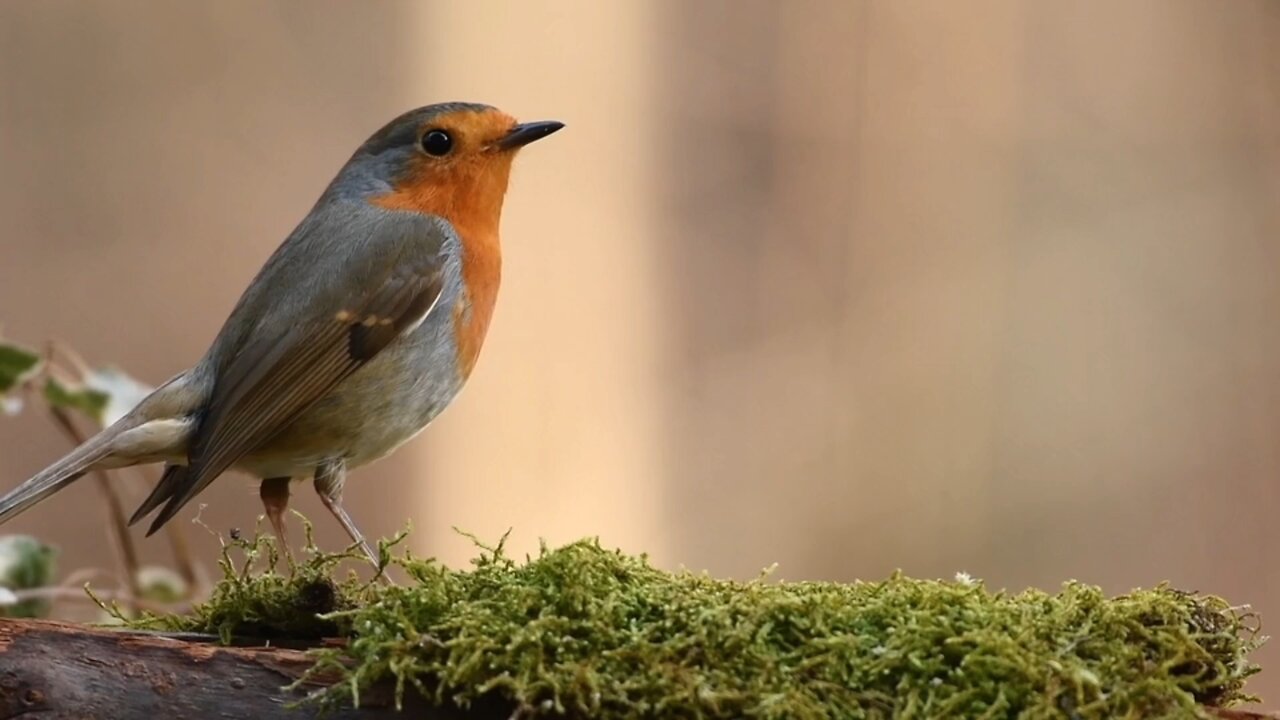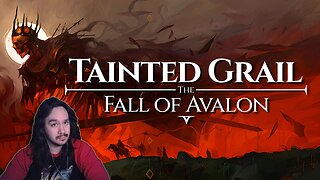Premium Only Content

"The European Robin: A Tale of Song and Survival"
The European robin (*Erithacus rubecula*) is a small, insectivorous songbird native to Europe, western Asia, and parts of North Africa. Known for its distinctive orange-red breast and face, the robin is a familiar and beloved bird across its range, often associated with winter and Christmas in European culture.
### Key Features:
- **Size**: The European robin is small, measuring about 12.5–14 cm (5–5.5 inches) in length, with a wingspan of 20–22 cm (8–9 inches).
- **Plumage**: Its most striking feature is the bright orange-red breast, extending up to the face and throat. The rest of the body is mainly brown with a white belly.
- **Song**: The robin's song is a sweet, warbling melody, which is often heard year-round but is particularly prominent in the spring and autumn.
### Behavior and Habitat:
- **Habitat**: Robins are highly adaptable and can be found in a variety of habitats, including woodlands, gardens, parks, and hedgerows. They are particularly fond of areas with dense undergrowth where they can forage for insects and worms.
- **Behavior**: European robins are territorial and can be quite aggressive towards intruders, especially during the breeding season. They are also known for their curious and bold nature, often approaching humans closely, especially when food is involved.
- **Diet**: Their diet primarily consists of insects, worms, spiders, and other invertebrates. In winter, they may also eat berries and seeds when insect prey is scarce.
### Cultural Significance:
- The European robin is a symbol of Christmas in many European countries, often featured on holiday cards and decorations.
- It has a strong presence in folklore and literature, frequently depicted as a friendly, helpful bird.
- The robin is the national bird of the United Kingdom.
### Breeding:
- Robins typically breed from April to June, with females laying 4-6 eggs per clutch. The nest is usually built in a hidden, sheltered location, such as a tree hole, wall crevice, or among dense vegetation.
- Both parents take part in feeding the chicks, which fledge around 14 days after hatching.
### Conservation:
- The European robin is currently listed as a species of Least Concern by the IUCN, meaning it is not at immediate risk of population decline. Its adaptability and widespread presence help ensure its survival across its range.
This bird's charming appearance and melodious song make it a favorite among birdwatchers and nature enthusiasts across Europe.
-
 1:43:07
1:43:07
Tucker Carlson
1 day agoBishop Barron on the New Pope, the Foolishness of Atheism, and Why Young Men Are Turning to Christ
204K201 -
 3:24:07
3:24:07
Barry Cunningham
7 hours agoJD Vance And Marco Rubio Speak at American Compass Fifth Anniversary Gala | And More News!
66.7K30 -
 2:52:45
2:52:45
TimcastIRL
6 hours agoTrump Admin ARRESTS Boulder Terrorists ENTIRE FAMILY, Preps Deportations | Timcast IRL
184K103 -
 2:40:48
2:40:48
RiftTV/Slightly Offensive
8 hours agoBig, Beautiful SCAM? Elon FLIPS on Trump for WASTEFUL Bill | The Rift | Guests: Ed Szall + Matt Skow
57.3K16 -
 LIVE
LIVE
SpartakusLIVE
7 hours agoSpecialist TOWER OF POWER || Duos w/ Rallied
512 watching -
 3:24
3:24
Glenn Greenwald
7 hours agoPREVIEW: Sen. Rand Paul Interview Exclusively on Locals
95.5K62 -
 3:54:13
3:54:13
VapinGamers
6 hours ago $1.57 earned⚔ 🔥 Blades of Fire - Game Review and Playthru - !game !rumbot #sponsored
37.8K5 -
 9:58:17
9:58:17
ZWOGs
10 hours ago🔴LIVE IN 1440p! - Max Payne 3, Halo Infinite, Marvel Rivals, Splitgate 2, & Maybe Helldivers 2 - Come Hang Out!
14.6K -
 1:14:00
1:14:00
The Daily Signal
7 hours ago🚨LIVE: Democrats Champion Illegals Amid MORE ICE Arrests
45.8K1 -
 5:21:25
5:21:25
RaikenNight
6 hours ago $0.21 earnedFinally got my surgery scheduled! Playing Tainted Grail
9.81K